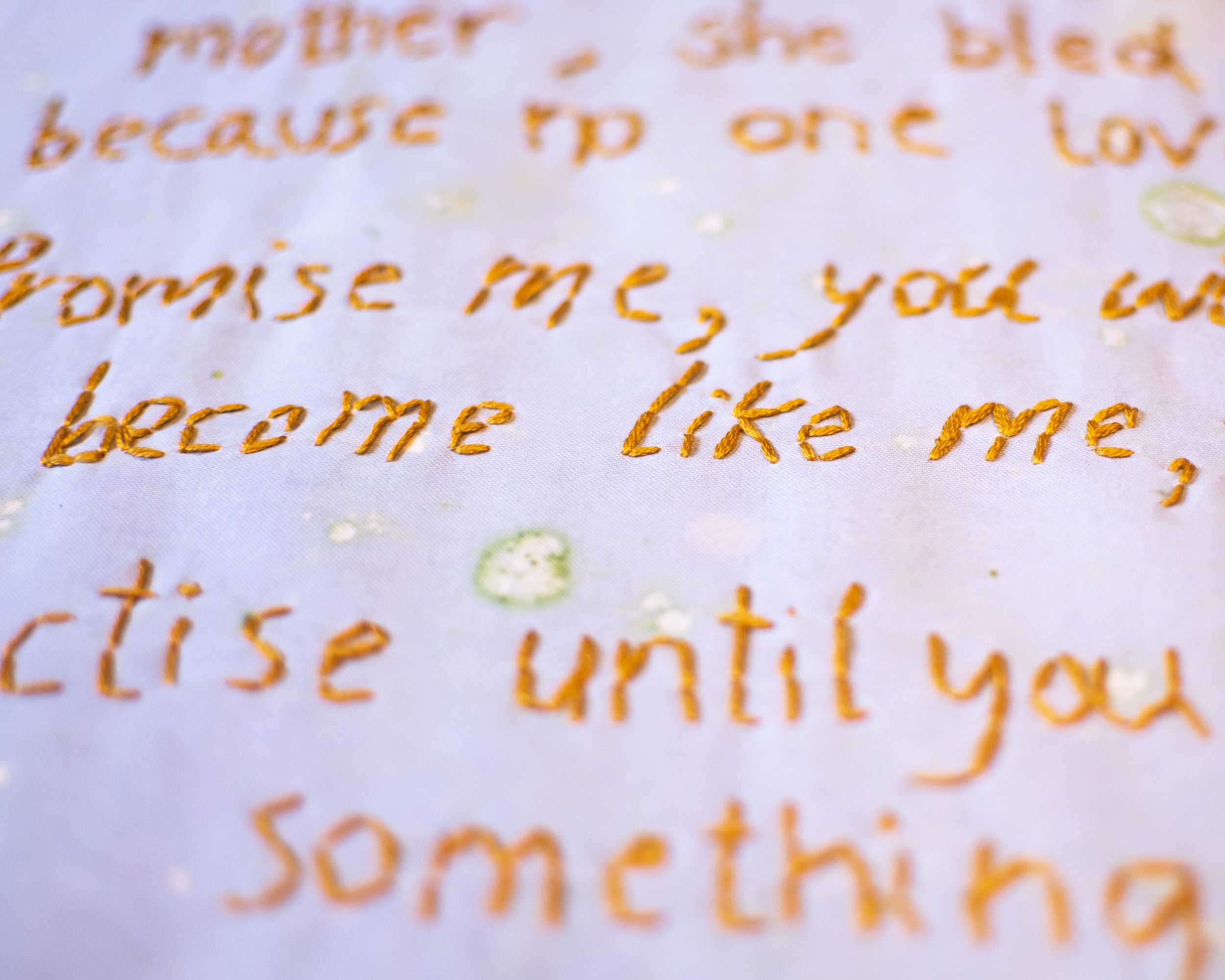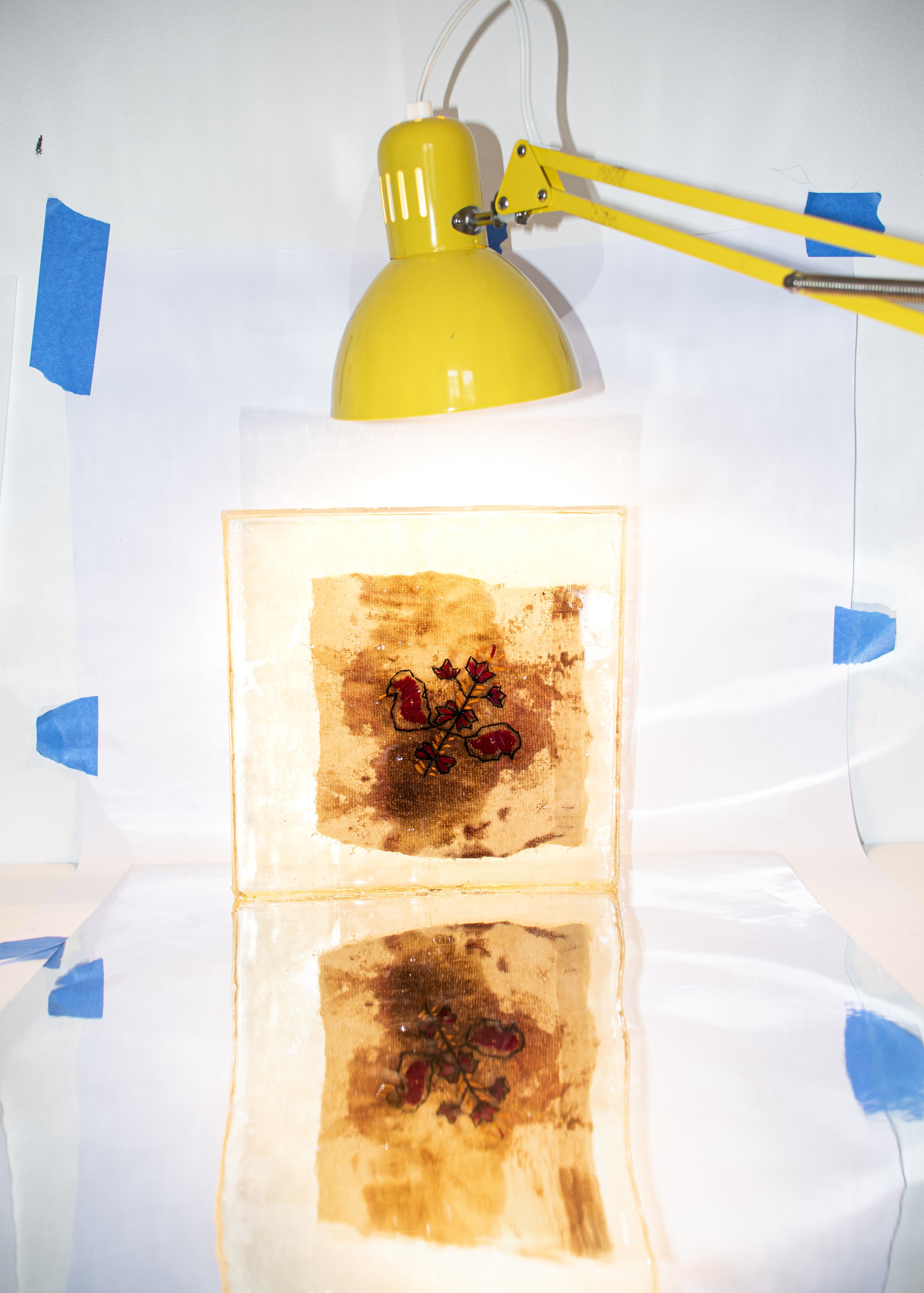
“All mothers are failed artists, fractured from the first time they are told they will one day be wives, and set up to fail even before the moment of conception. All mothers are mirrors, brazenly polished from birth to reflect a perfection that can never truly be. And no matter how self-aware we become about the socially constructive nature of motherhood that feeds these expectations, we will always have to grapple with the fundamental dilemma: will we become our mothers?
And this maybe why you may never see work like Mukherji's on the front page: a woman unafraid to show real (Indian) middle-class problems is dreadful. An artist unafraid to show herself caught in this maternal maelstrom is even more of a threat.”
— Alisha Sett, Ghorer Bairer Aalo, Foam Magazine #60 Glyphs: The Image + Text Issue
“It is through these feedback loops of misrecognition and similitude that we start to notice the ways in which Mukherji performs a body visibly at home and, yet, jaggedly out-of-place. The description of violence and her mother’s acute loneliness rupture the initial tranquility of the work. It is unclear whether Mukherji, who appears across many mirrors (some literal and others implied) in this series, eventually finds a posture of resemblance that is at once affective, somatic, and self-reflexive. The light outside does not then leave the home in darkness, but illuminates what is visible inside—by this half-light, the passage of a memory to a dream, or vice-versa.”
— Arnav Adhikar, Ghorer Bairer Aalo, PIX Magazine - Passages: A Subcontinental Imaginary
“The larger tapestries—extensions of her experiments with scale and printing techniques—also hint at the more primal intention of leaving a mark. Mukherji’s time spent learning to embroider is driven by a desire to reframe the skill with a subversive connotation. Her reclamation is one of whimsy, against the gendered responsibility that is bequeathed to generations of women. She envisions the act of embroidery as a haptic route to her mother. The repeated breaking and making of the surface exemplifies the solitude and loneliness that often goes unheard and unseen in familial spaces. In the light of Mukherji’s painstaking attempts to insert herself in the objects she inherits, the motif on the bloodstained towel copied from her mother’s shawl, along with the carefully embroidered text on the tapestries become citations in a series of renewals.”
























